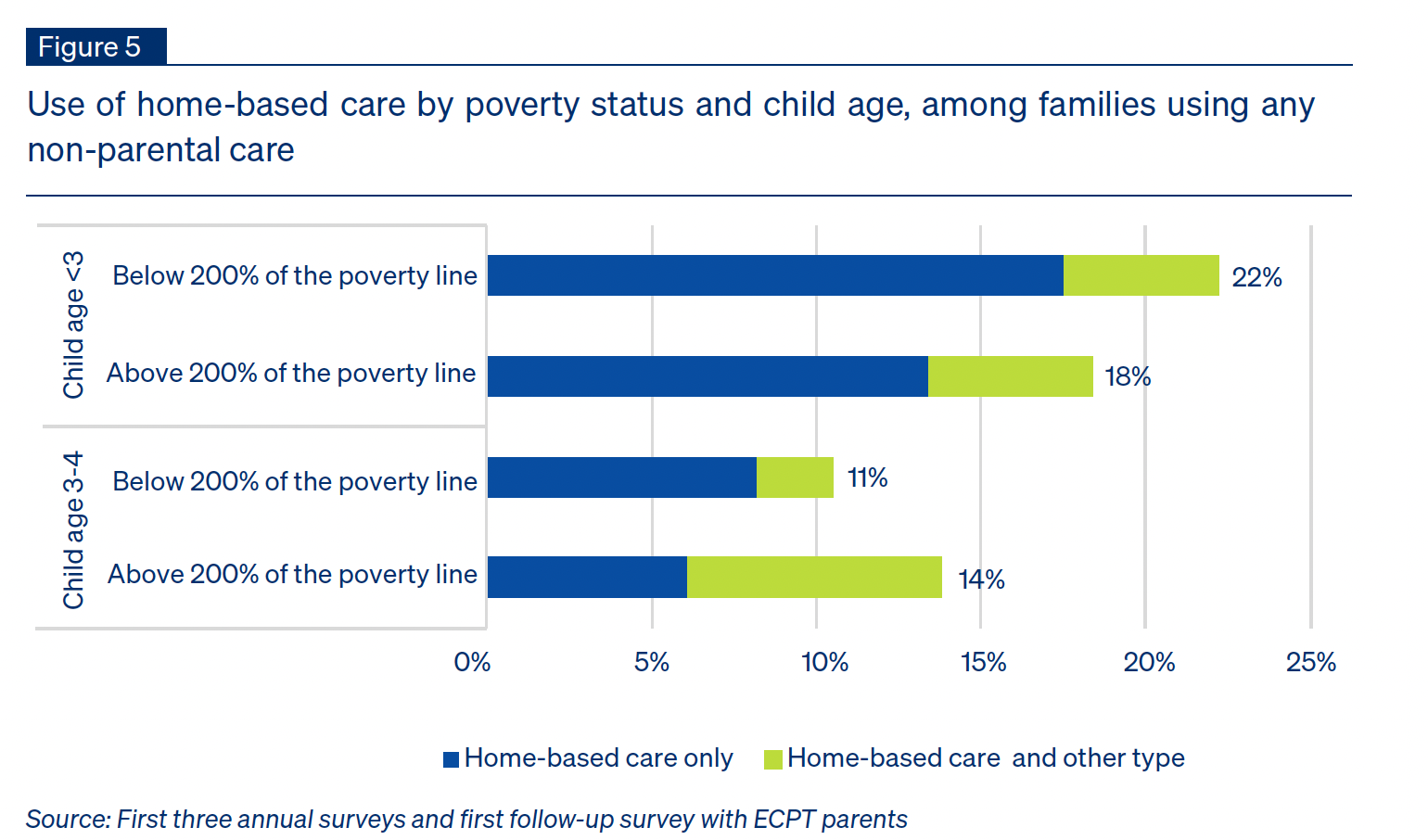September 2024
Spotlight on: Home-based Child Care in NYC in the Early Childhood Poverty Tracker
As the home-based child care sector shrinks due to pressures on providers, working families struggle to find affordable, flexible child care
Contributors: Eunho Cha, Jeanne Brooks-Gunn, Kathryn Neckerman, and Jane Waldfogel
Issues Areas: Early Childhood, Households With Children
In this report, data from the Early Childhood Poverty Tracker provides key insights about child care in NYC from 2017 to 2020.
The report finds that as child care access and affordability struggles persist citywide, home-based care is an important lifeline for many parents from all walks of life, but especially for low-income parents who have an even harder time affording quality child care. Home-based care is often more affordable, and it may offer more schedule flexibility for working parents. However, home-based slots are vanishing at a rapid clip, accelerated by the pandemic, and still remain unaffordable for most low-income families and about half of families above the poverty line. This report finds that NYC families with children under age 3, those living in the Bronx, Brooklyn, and Queens, and those who are Black or Latino are especially reliant on home-based child care. If home-based care providers continue to struggle financially, these are the families who will be the most severely impacted.
Explore key takeaways below:
- About 72% of families who used home-based care and had income below 200% of the federal poverty line faced unaffordable child care costs. Among those above 200% of the federal poverty line, home-based care was unaffordable for 53% of families.
- Without a subsidy, more than two-thirds of working families in the city could not afford home-based care.
20
%
of parents with children under 3 used home-based child care for those children. Black and Latinx parents were about twice as likely as other parents to use home-based child care.
23
%
of families in the Bronx use home-based care, and most of them use it as their only form of care. About 15% of families in Brooklyn and Queens use home-based care, either alone or as a supplement.
72
%
of families who used home-based care and had income below 200% of the federal poverty line faced unaffordable child care costs. Among those above 200% of the federal poverty line, home-based care was unaffordable for 53% of families.

To preserve and expand the availability of home-based care, more must be done to ease the costs on providers of operating programs. Robin Hood supports policies and advocates for changes that strengthen the sector and its workforce to help ensure that supply of affordable child care meets demand, such as paying providers higher subsidy rates and access to paid leave and other benefits, job training, and professional development for providers.